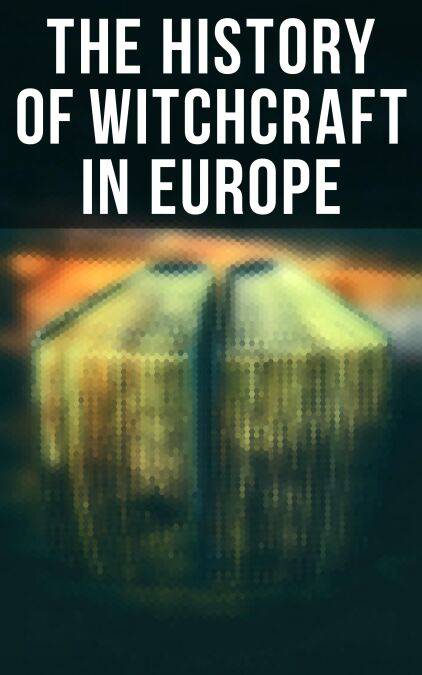
Je cadeautjes zeker op tijd in huis hebben voor de feestdagen? Kom langs in onze winkels en vind het perfecte geschenk!
- Afhalen na 1 uur in een winkel met voorraad
- Gratis thuislevering in België vanaf € 30
- Ruim aanbod met 7 miljoen producten
Je cadeautjes zeker op tijd in huis hebben voor de feestdagen? Kom langs in onze winkels en vind het perfecte geschenk!
- Afhalen na 1 uur in een winkel met voorraad
- Gratis thuislevering in België vanaf € 30
- Ruim aanbod met 7 miljoen producten
Zoeken
The History of Witchcraft in Europe E-BOOK
Darkness & Sorcery Collection: Lives of the Necromancers, The Witch Mania, Magic and Witchcraft, Glimpses of the Supernatural, Witch Stories…
John Ashton, William Godwin, Howard Williams, Frederick George Lee, Walter Scott, Jules Michelet, M. Schele de Vere, W. H. Davenport Adams, Charles Mackay, George Moir, Margaret Murray, St. John D. Seymour, John G. Campbell, John Maxwell Wood, Bram Stoker, E. Lynn Linton, Wilhelm Meinhold
E-book | Engels
€ 1,99
+ 1 punten
Omschrijving
The History of Witchcraft in Europe' is a compelling anthology that traverses the murky waters of witchcraft's past through a diverse array of literary styles. This collection encapsulates a wide-ranging chronicle from medieval superstitions and the horrors of the witch hunts to the Romantic reinterpretation of witch folklore within a modern scholarly framework. The anthology highlights not only the dark narratives that have swirled around this theme but also represents pivotal transformations in the portrayal of witchcraft, underscored by critical texts which reveal the shifting intersection of fear, mysticism, and power dynamics in European societies. The authors contributing to this anthology, such as John Ashton, Bram Stoker, and Margaret Murray, bring a rich tapestry of backgrounds influenced by various movements like Romanticism and the Enlightenment while embodying unique philosophical, historical, and literary insights. Their collective works offer a nuanced understanding of the sociopolitical fears and theological battles that historically fueled the witchcraft craze and its subsequent study. This anthology serves as a crucible where the myriad perspectives and interpretations regarding European witchcraft meld together, reflecting their disparate cultural contexts and personal ideologies. Reaching into 'The History of Witchcraft in Europe' provides an enriching academic experience. For the erudite reader and the curious novice alike, this anthology offers a panoramic view into the diverse narratives and analyses about witchcraft, presenting an opportunity to engage with the subject's complexity through well-crafted scholarship. The collection encourages readers to appreciate the historical evolution of witchcraft within Europe, challenging them to consider broader questions about human nature, fear, and the societal construct of otherness.
Specificaties
Betrokkenen
- Auteur(s):
- Vertaler(s):
- Uitgeverij:
Inhoud
- Aantal bladzijden:
- 4005
- Taal:
- Engels
Eigenschappen
- Productcode (EAN):
- 4064066051761
- Verschijningsdatum:
- 17/12/2019
- Uitvoering:
- E-book
- Beveiligd met:
- Digital watermarking
- Formaat:
- ePub

Alleen bij Standaard Boekhandel
+ 1 punten op je klantenkaart van Standaard Boekhandel
Beoordelingen
We publiceren alleen reviews die voldoen aan de voorwaarden voor reviews. Bekijk onze voorwaarden voor reviews.









